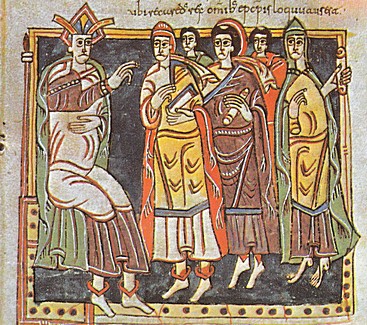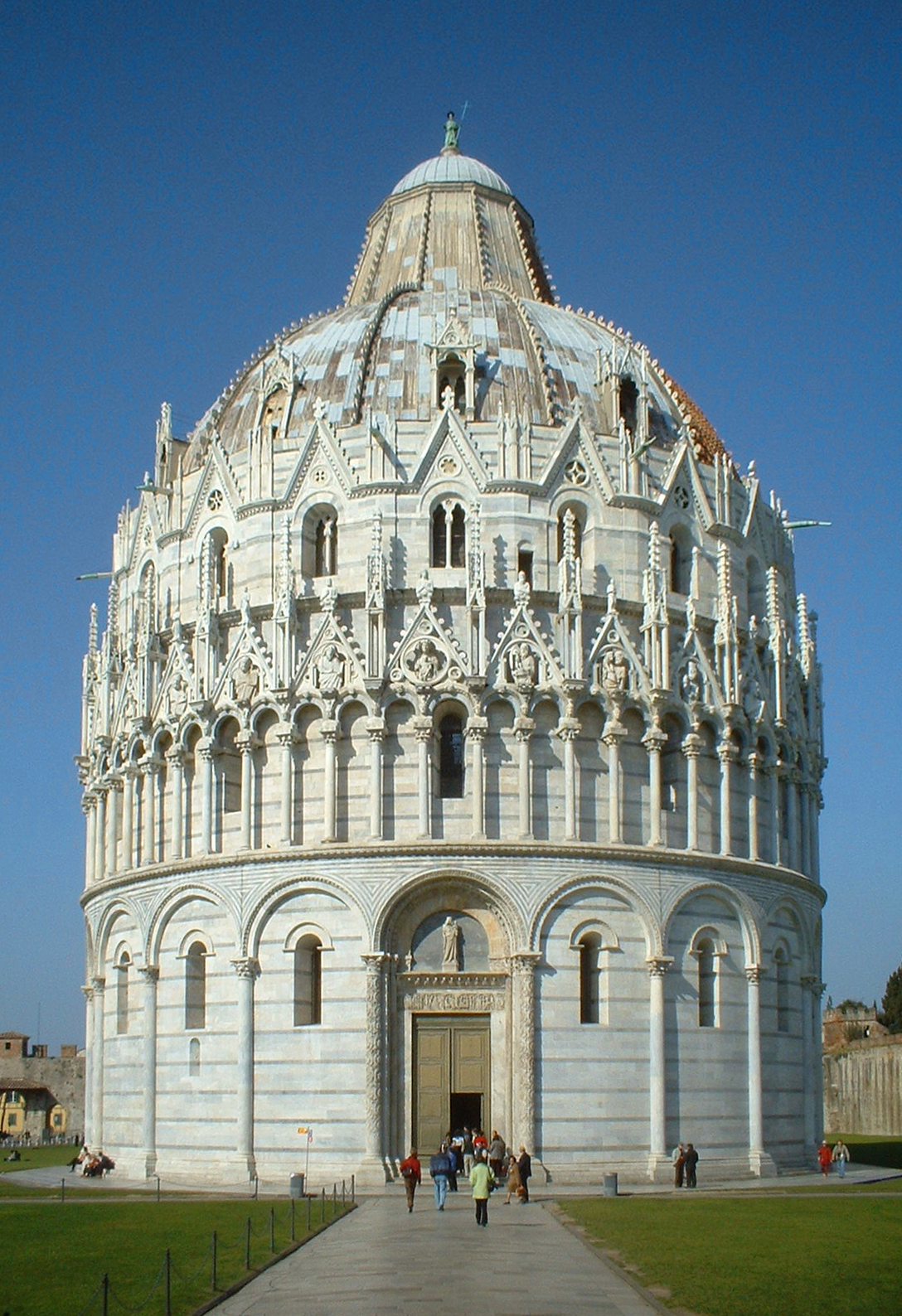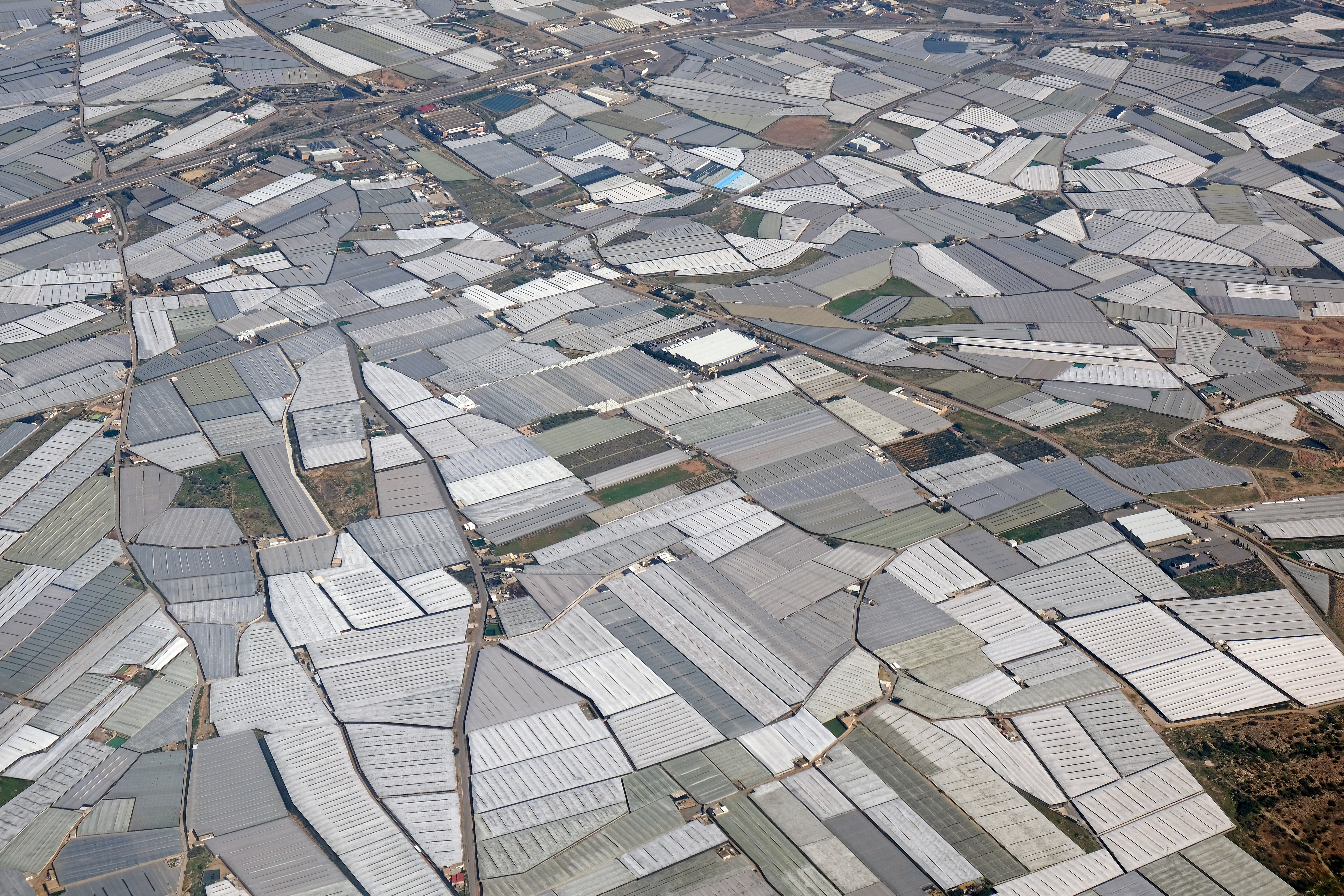|
Roman Catholic Diocese Of Guadix
The Diocese of Guadix () is a Latin suffragan diocese of the Catholic Church in the ecclesiastical province of Granada in Andalusia, southern Spain and a Latin titular bishopric under its Ancient name of Acci. Its cathedral episcopal see is Nuestra Señora de la Anunciación, dedicated to Our Lady of the Annunciation, in the city of Guadix, administrative province of Granada. It was commenced in 1710, on the site occupied by the principal mosque, and completed in 1796. The diocese also has an (also Marian) co-cathedral, Nuestra Señora Santa María de la Encarnación, dedicated to Our Lady of the Incarnation (of Christ), in Baza, built as cathedral of the absorbed Diocese of Baza (Basti, suppressed circa 700). The Seminary of St. Torquatus was founded by Bishop Juan José Fonseca in 1595. King Charles IV of Spain founded a hospice in 1803, and the ancient Jesuit college had become a hospital before the early 20th century. Statistics The modern diocese of Guadix compris ... [...More Info...] [...Related Items...] OR: [Wikipedia] [Google] [Baidu] |
Guadix Cathedral
The Cathedral of the Incarnation () is a Roman Catholic cathedral in Guadix, Spain. Construction began during the 16th century and was completed by the mid-18th century. It is the seat of the Roman Catholic Diocese of Guadix, Diocese of Guadix. Location and historical context Guadix is believed to be one of the oldest diocese, diocesan seats in Spain; tradition has it that the diocese was founded by Saint Torquatus of Acci in the first century A.D. The cathedral sits on the site of an earlier Hispano-Visigothic church extant in the 10th century, and which functioned during the Islamic period as a mosque. During the ''Reconquista'', Guadix was captured by the Christian forces in 1489, and the Hispano-Visigothic church was reestablished as the seat of a Episcopal see, bishopric. It was given the name of the Church of Saint Mary of the Incarnation (''Iglesia de Santa María de la Encarnación''), was made a cathedral by a papal bull, bull of Pope Innocent VIII, and was somewhat expan ... [...More Info...] [...Related Items...] OR: [Wikipedia] [Google] [Baidu] |
Baza, Granada
Baza is a town in the province of Granada in Andalusia (southern Spain), twice a former Catholic bishopric and now a Latin Catholic titular see as Basti. Modern town It has 21,000 inhabitants (2003). It is situated at 844 m above sea level, in the Hoya de Baza, a valley of the Sierra Nevada, not far from the Gallego River. This town gives its name to the Sierra de Baza. The dome-shaped mountain of Jabalcón overlooks the town from the north-west. The Municipality lies at the southern edge of the Altiplano de Granada. History The sculpture of the Lady of Baza is a prehistoric artifact discovered in this area on 22 July 1971. The city was founded by the Iberians in the 4th century BC and named Basti, the name by which it was known in Roman times. As part of the Roman province of Tarraco, it was an important commercial center and an early bishopric (see below). Under the Moors, Baza was an important frontier post along the border with the kingdom of Murcia. It was also a ... [...More Info...] [...Related Items...] OR: [Wikipedia] [Google] [Baidu] |
Almohades
The Almohad Caliphate (; or or from ) or Almohad Empire was a North African Berber Muslim empire founded in the 12th century. At its height, it controlled much of the Iberian Peninsula (Al-Andalus) and North Africa (the Maghreb). The Almohad movement was founded by Ibn Tumart among the Berber Masmuda tribes, but the Almohad caliphate and its ruling dynasty, known as the Mu'minid dynasty, were founded after his death by Abd al-Mu'min. * Around 1121, Ibn Tumart was recognized by his followers as the Mahdi, and shortly afterwards he established his base at Tinmel in the Atlas Mountains. Under Abd al-Mu'min (r. 1130–1163), they succeeded in overthrowing the ruling Almoravid dynasty governing the western Maghreb in 1147, when he conquered Marrakesh and declared himself caliph. They then extended their power over all of the Maghreb by 1159. Al-Andalus followed, and all of Muslim Iberia was under Almohad rule by 1172. The turning point of their presence in the Iberian Peninsula ... [...More Info...] [...Related Items...] OR: [Wikipedia] [Google] [Baidu] |
Isidorus Pacensis
The ''Chronicle of 754'' (also called the ''Mozarabic Chronicle'' or ''Continuatio Hispana'') is a Latin-language history in 95 sections, written by an anonymous Mozarab (Christian) chronicler in Al-Andalus. The ''Chronicle'' contains the earliest known reference in a Latin text to "Europeans" (''europenses''), whom it describes as having defeated the Saracens at the battle of Tours in 732. Author Its compiler was an anonymous Mozarab (Christian) chronicler, living under Arab rule in some part of the Iberian Peninsula. Since the 16th century, it has been attributed to an otherwise unknown bishop, Isidorus Pacensis but this attribution is now widely accepted as being the result of compounded errors. Henry Wace explained the origin and the phantom history of "Isidorus Pacensis", an otherwise unattested bishop of Pax Julia (modern Beja, Portugal). There is also some disagreement about the place where the ''Chronicle'' was written. Tailhan named Córdoba as the city of origin. M ... [...More Info...] [...Related Items...] OR: [Wikipedia] [Google] [Baidu] |
Mozarabs
The Mozarabs (from ), or more precisely Andalusi Christians, were the Christians of al-Andalus, or the territories of Iberia under Muslim rule from 711 to 1492. Following the Umayyad conquest of the Visigothic Kingdom in Hispania, the Christian population of much of Iberia came under Muslim control. Initially, the vast majority of Mozarabs kept Christianity and their dialects descended from Latin. Gradually, the population converted to Islam—an estimated 50% by the year 951 ''Cited in'' —and was influenced, in varying degrees, by Arab customs and knowledge, and sometimes acquired greater social status in doing so. The local Romance vernaculars, with an important contribution of Arabic and spoken by Christians and Muslims alike, are referred to as Andalusi Romance (also called ''Mozarabic language''). Mozarabs were mostly Catholics of the Visigothic or Mozarabic Rite. Due to Sharia and fiqh being confessional and only applying to Muslims, the Christians paid the jizya tax, ... [...More Info...] [...Related Items...] OR: [Wikipedia] [Google] [Baidu] |
Council Of Toledo
From the 5th century to the 7th century AD, about thirty synods, variously counted, were held at Toledo, Spain, Toledo (''Concilia toletana'') in what would come to be part of Spain. The First Council of Toledo, earliest, directed against Priscillianism, assembled in 400. The Third Council of Toledo, "third" synod of 589 marked the epoch-making conversion of King Reccared from Arianism to Catholic Chalcedonian Christianity. The "Fourth Council of Toledo, fourth", in 633, probably under the presidency of the noted Isidore of Seville, regulated many matters of discipline and decreed uniformity of liturgy throughout the kingdom. The Britonia of Galicia (Spain), Galicia accepted the Latin liturgical rites, Latin liturgical rite. The Twelfth Council of Toledo, "twelfth" council in 681 assured to the archbishop of Toledo the primacy of Hispania (present Iberian Peninsula). As nearly one hundred early canon law, canons of Toledo found a place in the ''Decretum Gratiani'', they exerted an ... [...More Info...] [...Related Items...] OR: [Wikipedia] [Google] [Baidu] |
Council Of Elvira
The Synod of Elvira (, ) was an ecclesiastical synod held at Elvira in the Roman province of Hispania Baetica, now Granada in southern Spain.. Its date has not been exactly determined but is believed to be in the first quarter of the fourth century, approximately 305–6. It was one of three councils, together with the Synod of Arles (314) and the Synod of Ancyra, that first approached the character of general councils and prepared the way for the first ecumenical council. It was attended by nineteen bishops and twenty-six presbyters, mostly resident in Baetica. Deacons and laymen were also present. Eighty-one canons are recorded, although it is believed that many were added at later dates. All concern order, discipline and conduct among the Christian community. Canon 36, forbidding the use of images in churches, became a bone of contention between Catholic and Protestant scholars after the Protestant Reformation. It is one of a number of pre-ecumenical ancient church c ... [...More Info...] [...Related Items...] OR: [Wikipedia] [Google] [Baidu] |
Baptistery
In Church architecture, Christian architecture the baptistery or baptistry (Old French ''baptisterie''; Latin ''baptisterium''; Greek language, Greek , 'bathing-place, baptistery', from , baptízein, 'to baptize') is the separate centrally planned structure surrounding the baptismal font. The baptistery may be incorporated within the body of a church or cathedral, and provided with an altar as a chapel. In the early early Christianity, Church, the catechumens were instructed and the sacrament of baptism was administered in the baptistery. Design The sacramental importance and sometimes architectural splendour of the baptistery reflect the historical importance of baptism to Christians. Beginning in the fourth century, baptisteries in Italy were often designed with an octagonal plan. The octagonal plan of the Lateran Baptistery, the first structure expressly built as a baptistery, provided a widely followed model. The baptistery might be twelve-sided, or even circular as at Pisa. ... [...More Info...] [...Related Items...] OR: [Wikipedia] [Google] [Baidu] |
Acci
Acci () was an ancient inland city of Hispania Tarraconensis, on the borders of Baetica. Under the Romans, and with the Jus Latinum, it was a colony with the full name of Colonia Julia Gemella Accitana. Its coins are numerous, bearing the heads of Augustus, Tiberius, Germanicus, Drusus, and Caligula, and the ensigns of the legions iii. and vi., from which it was colonized by Julius Caesar or Augustus, and from which it derived the name of ''Gemella''. According to Macrobius, Mars was worshipped here with his head surrounded with the sun's rays, under the name of Netos. Such an emblem is seen on the coins. The town became Christian at an early date; the Diocese of Acci was established in 47 AD. The bishop is no longer resident in the uninhabited site, but Acci remains a titular see of the Roman Catholic Church. The location is now called Guadix el Viejo or Castillo de Luchena in the municipality of Purullena, Comarca de Guadix, Province of Granada, Andalusia, Spain, and is ... [...More Info...] [...Related Items...] OR: [Wikipedia] [Google] [Baidu] |
Seven Apostolic Men
According to Christian tradition, the Seven Apostolic Men (''siete varones apostólicos'') were seven Christian clerics ordained in Rome by Saints Peter and Paul and sent to evangelize Spain. This group includes Torquatus, Caecilius, Ctesiphon, Euphrasius, Indaletius, Hesychius, and Secundius (''Torcuato, Cecilio, Tesifonte, Eufrasio, Indalecio, Hesiquio y Segundo''). It is not clear whether the seven men were Romans, Greeks, or natives of Hispania. The legend probably dates from the 8th century. The ''Martyrology of Lyon'' (806 AD) incorporated text from a fifth-century source, and the seven saints are mentioned in the Mozarabic liturgy. According to manuscripts of the 10th century, which in turn recorded information from the 8th or 9th centuries, these seven clerics arrived at ''Acci'' ( Guadix) during the celebrations in honor of Jupiter, Mercury, and Juno. The pagans chased them to the river, but the bridge collapsed miraculously and the seven men were saved. ... [...More Info...] [...Related Items...] OR: [Wikipedia] [Google] [Baidu] |
Province Of Almería
Almería (, also ; ) is a province of the autonomous community of Andalusia, Spain. It was named after the Arab ruler of Taifa, Banu Al-Miri. It is bordered by the provinces of Granada, Murcia, and the Mediterranean Sea. Its capital is the homonymous city of Almería. Almería has an area of . With 701,688 (2014) inhabitants, its population density is 79.96/km2, slightly lower than the Spanish average. It is divided into 103 municipalities. Geography The highest mountain range in the Province of Almería is the long Sierra de Los Filabres, a subrange of the Sierra Nevada. Europe's driest area is found in Almería and is part of the Cabo de Gata-Níjar Natural Park. The arid landscape and climate of the province have made it an ideal setting for Western films, especially during the 1960s. Because of the demand for these locations, quite a number of Western towns were built near the Tabernas Desert. Films such as ''A Fistful of Dollars'', ''For a Few Dollars More'', and '' T ... [...More Info...] [...Related Items...] OR: [Wikipedia] [Google] [Baidu] |
Province Of Granada
Granada is a province of southern Spain, in the eastern part of the autonomous community of Andalusia. It is bordered by the provinces of Albacete, Murcia, Almería, Jaén, Córdoba, Málaga, and the Mediterranean Sea (along the Costa Tropical). Its capital city is also called Granada. The province covers an area of . Its population was 921,338 , of whom about 30% live in the capital, and its average population density is . It contains 170 municipalities. There are certain conception about the ''autonomous community of Granada'' being separate from Andalusia. The new autonomous community would consist of the provinces of Granada, Almería and Málaga. The conception has not yet found a response. Geography The tallest mountain in the Iberian Peninsula, Mulhacén, is located in Granada. It measures . The next highest mountains in the province are Veleta () and Alcazaba (). The river Genil, which rises in Granada, is one of the main tributaries of the Guadalquivir. Oth ... [...More Info...] [...Related Items...] OR: [Wikipedia] [Google] [Baidu] |




